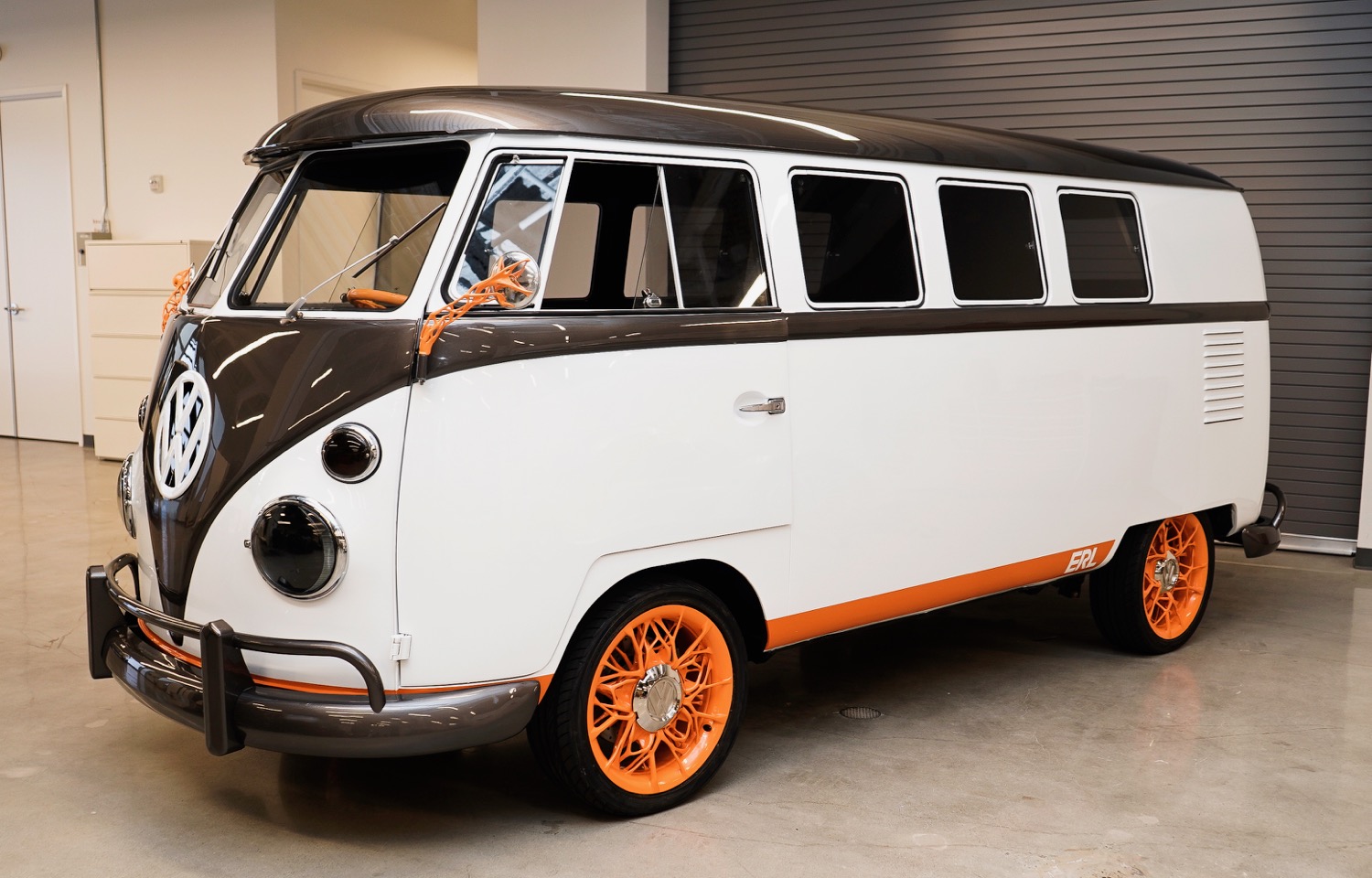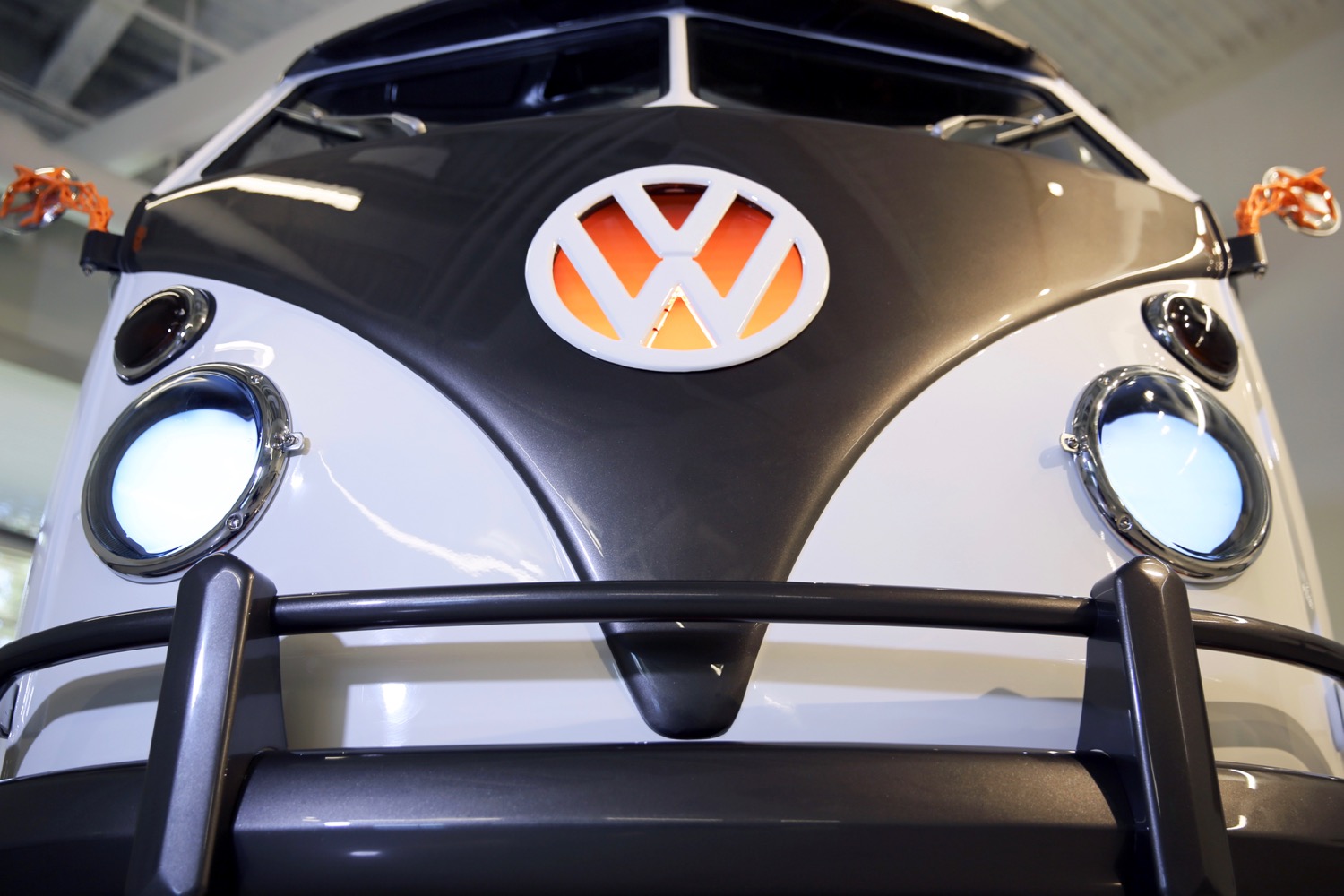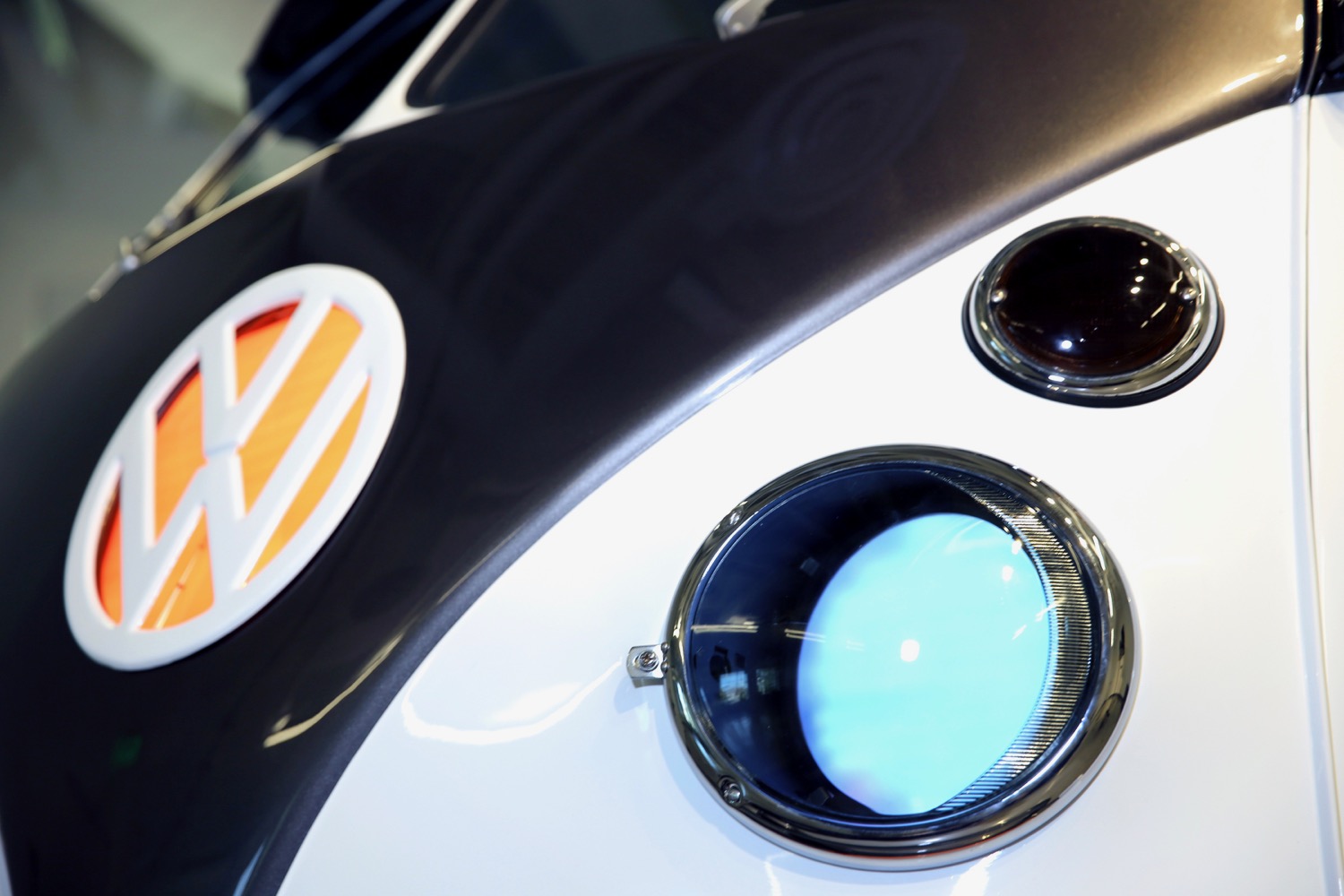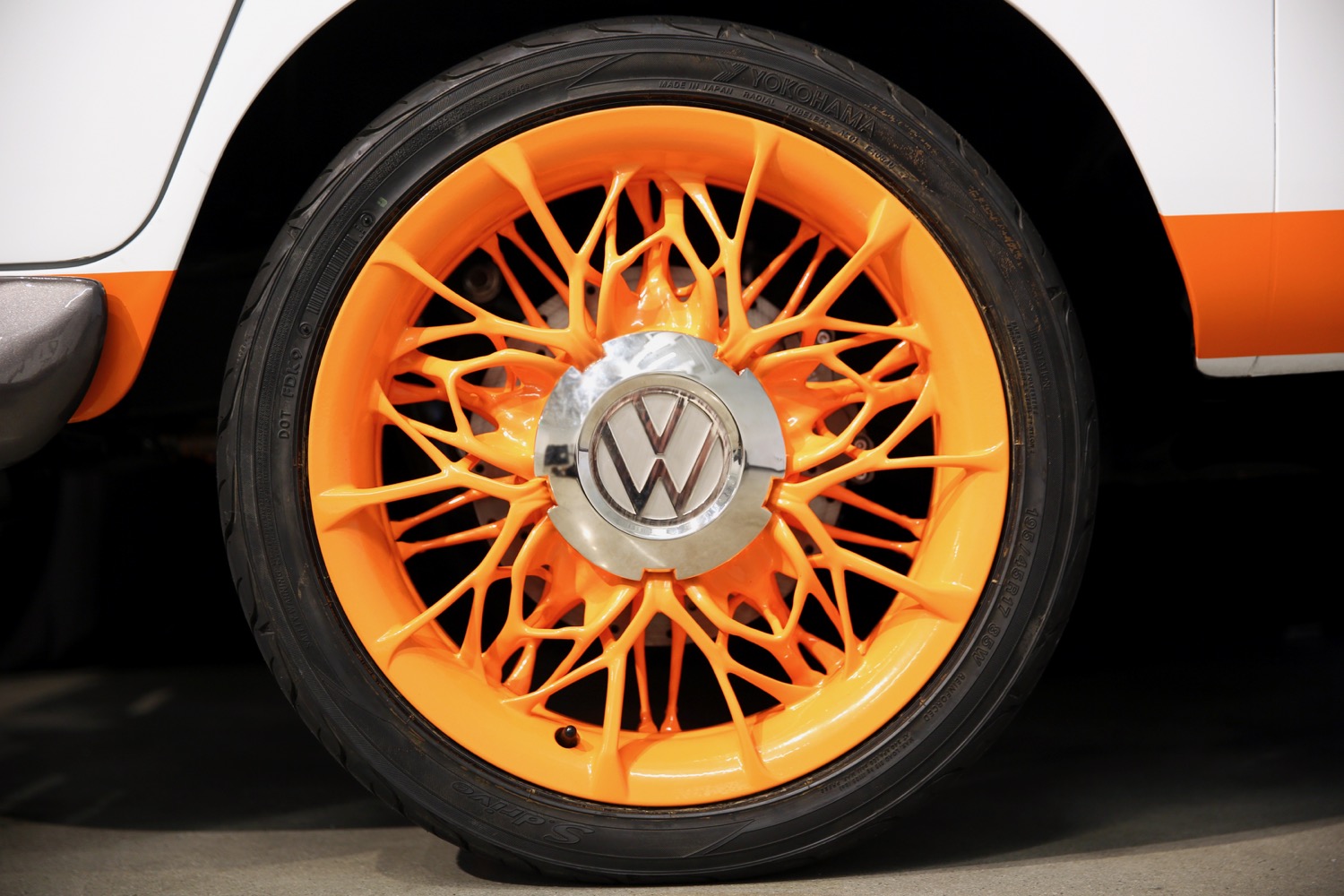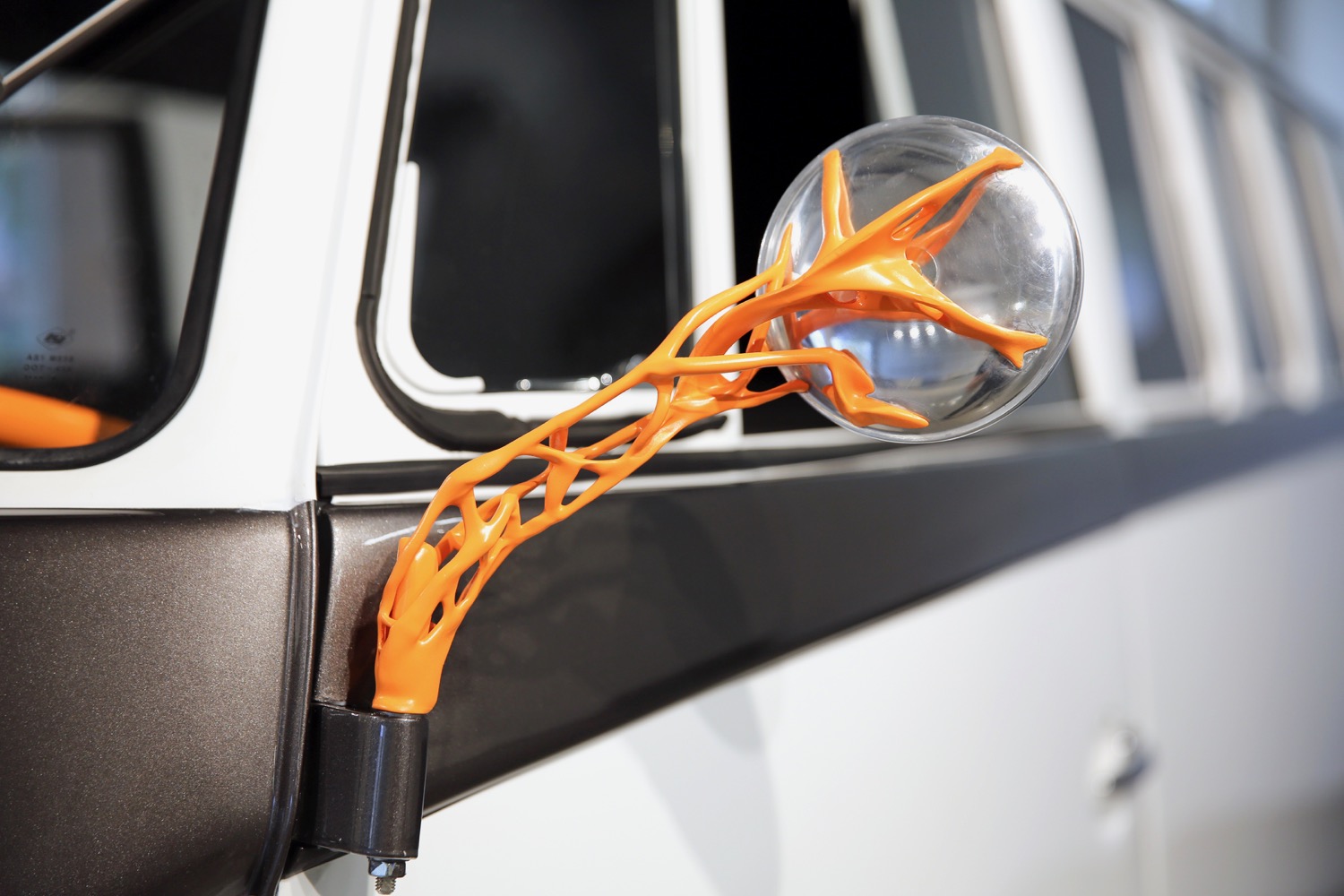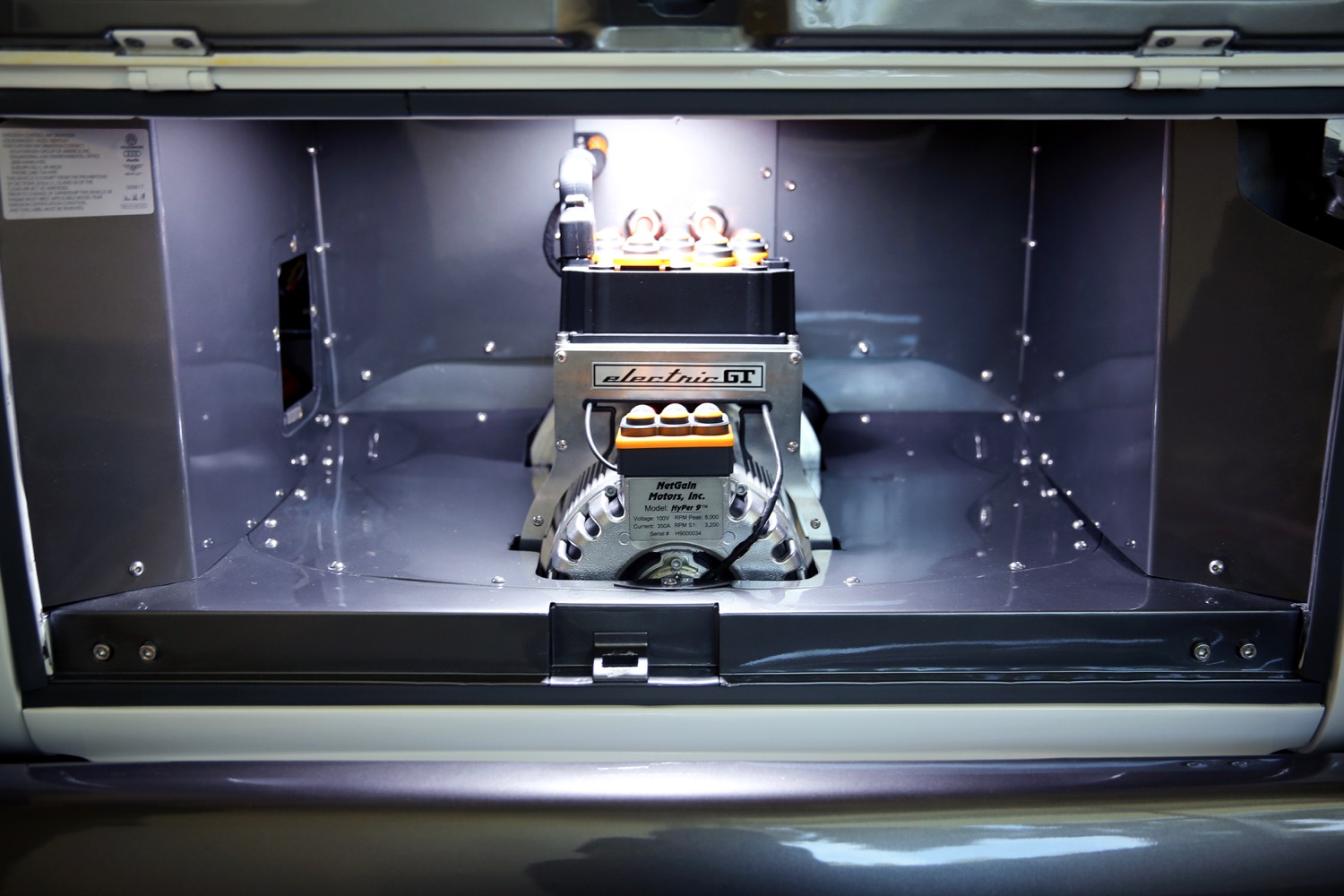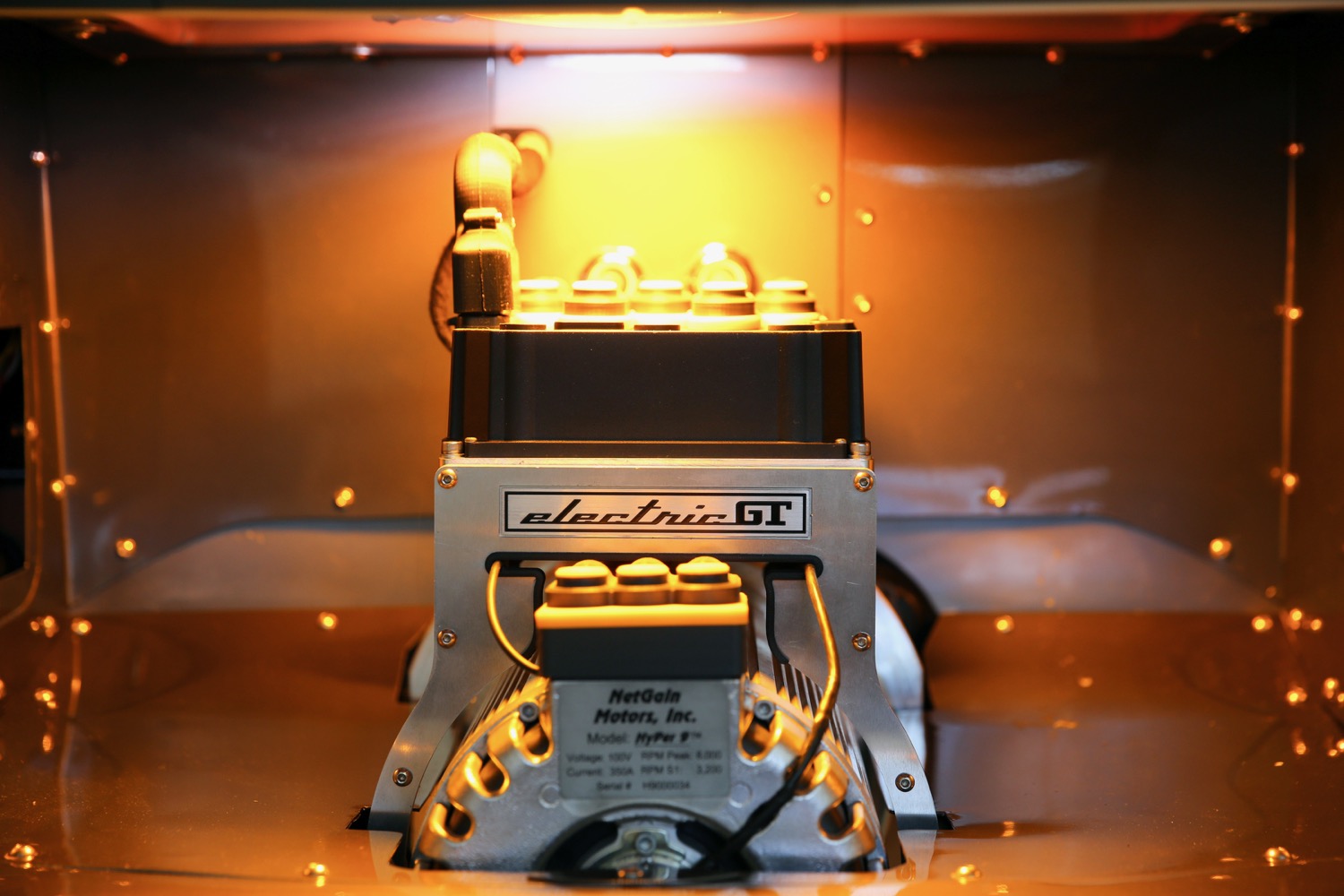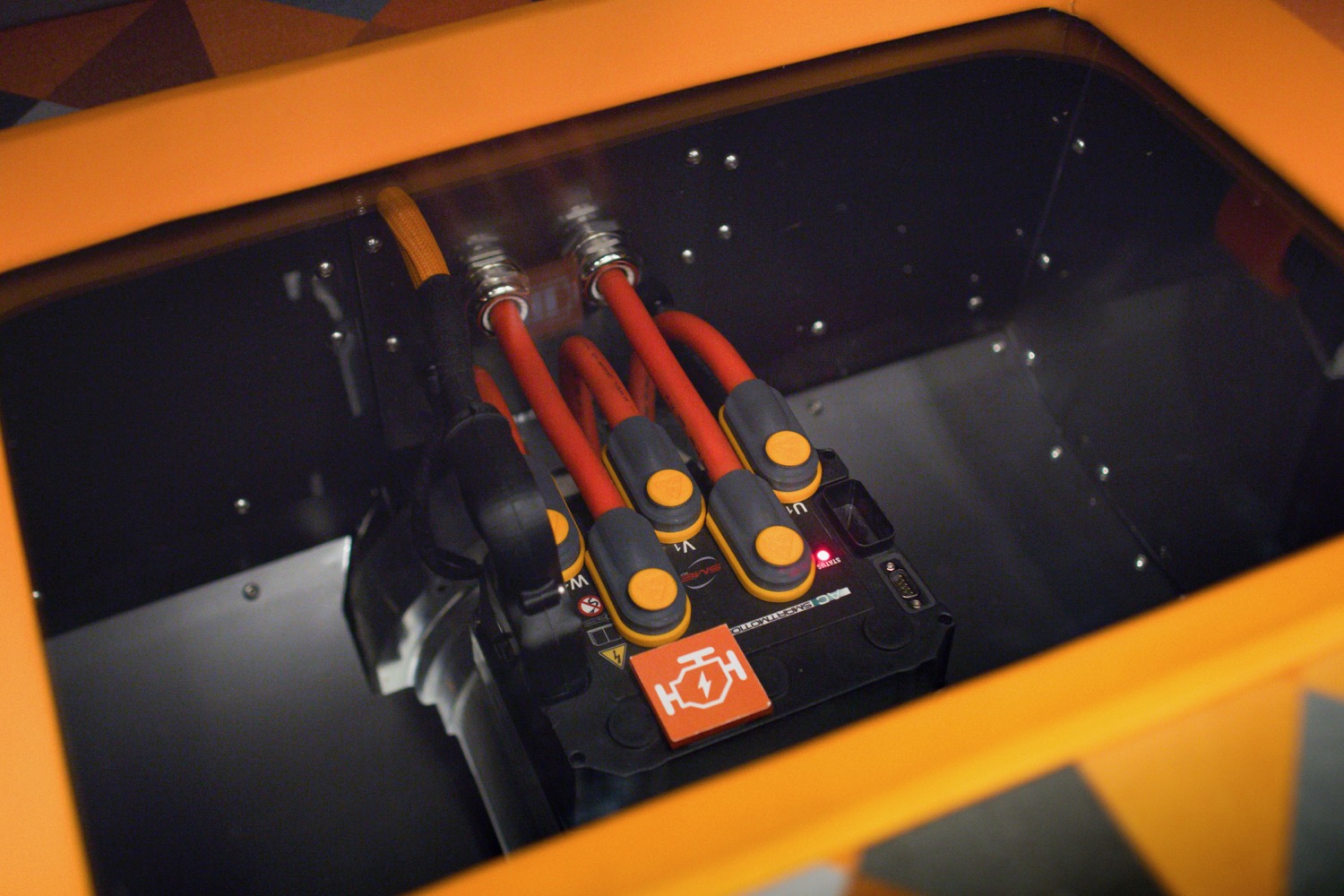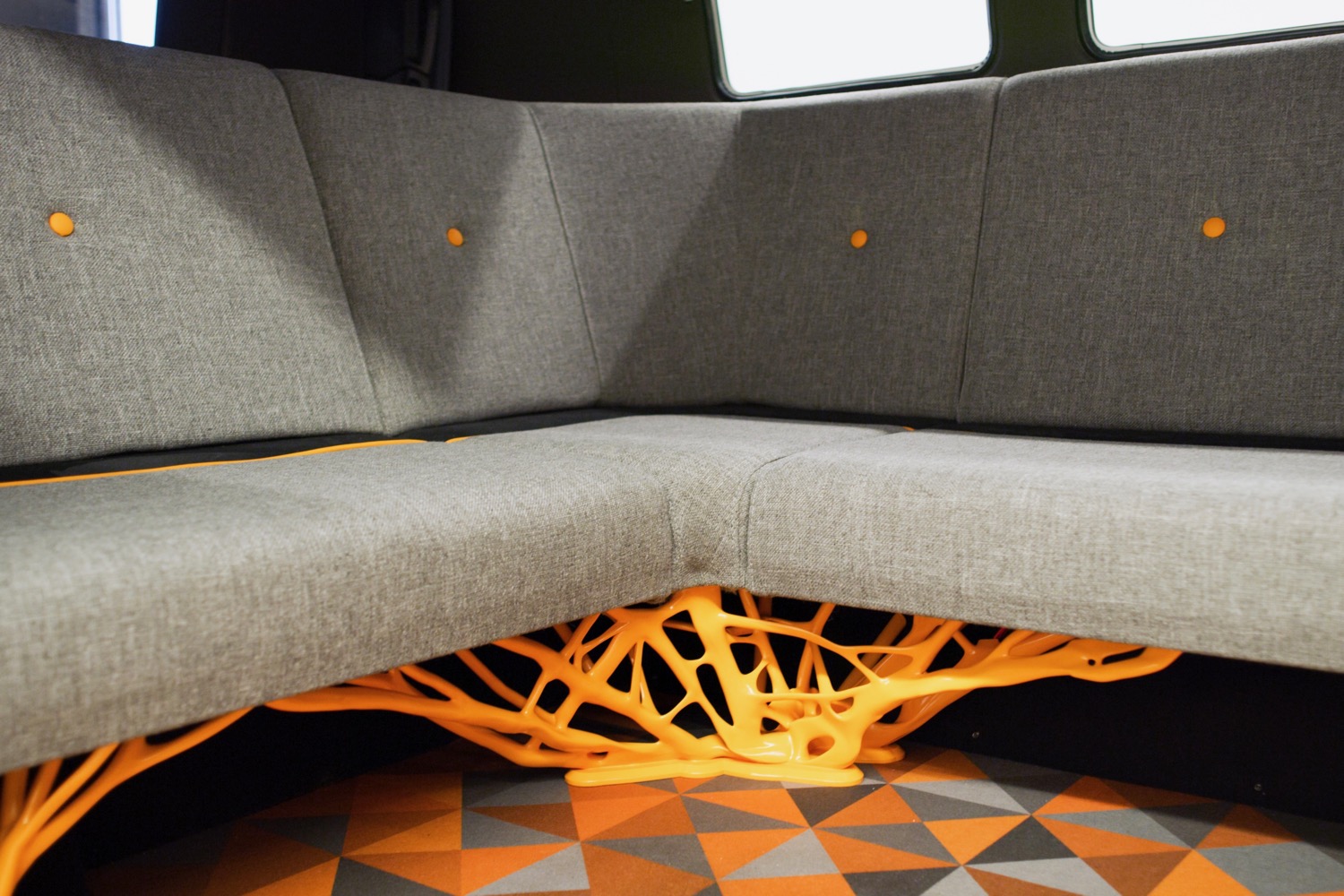Volkswagen expanded its Silicon Valley, California, research center, and to celebrate, it gave a 1962 Type 2 11-window Microbus a high-tech makeover. One of the most potent symbols of the 1960s, the Microbus was updated with features like an electric powertrain and a holographic infotainment system. The modernized vehicle was dubbed the Type 20 concept, a nod to Volkswagen’s 20-year presence in Silicon Valley.
At first glance, the Type 20 concept looks similar to a stock Mircobus. But upon closer inspection, the wheels, rearview mirror supports, and elements of the interior have a weird, alien look. The pieces, which were created using Autodesk software, are examples of “generative design,” according to VW. They were designed to maximize strength and minimize weight, using nature as a guide, according to the automaker.
In place of the original flat-four engine, the Type 20 concept features an electric motor producing 120 horsepower and 173 pound-feet of torque. A 10-kilowatt-hour battery pack provides the juice. The Type 20 also features an active air-suspension system designed by VW sibling brand Porsche. The vehicle automatically rises up to its road-going ride height as the driver approaches.
Getting into the Type 20 concept involves submitting to a facial-recognition scan. The system uses a 720p wide-angle camera mounted in the second driver’s side window, with facial-recognition software running on an Nvidia Jetson TX2 prototyping package. Once the driver gains access to the vehicle, they can use a built-in digital assistant and holographic infotainment system, something Volkswagen tried on another recent concept car.
The Type 20 concept was built to highlight the expansion of VW’s Silicon Valley presence. The automaker opened its Electronics Research Laboratory (ERL) in 1998 with just three employees. The facility gradually expanded to more than 180 employees, who have tackled projects like building a prototype self-driving car in concert with Stanford University. Nicknamed “Stanley,” the modified Volkswagen Touareg SUV competed in the 2005 Defense Advanced Research Projects Agency Grand Challenge, traversing 132 miles of desert without human intervention, according to VW.
The ERL is being expanded and renamed the Innovation and Engineering Center California (IECC). It will be the largest Volkswagen research facility outside of Germany, according to VW, and demonstrates the automaker’s eagerness to tailor its products more closely to U.S. customer tastes. The IECC will be comprised of two branches: the Innovation Center California (ICC) and Engineering Center California (ECC). The ICC will be one of three such facilities around the world and will focus on long-term research projects. The ECC will focus on developing tech like connected cars and autonomous driving for the North American market, according to VW.
If the all-electric Type 20 concept gets your motor humming, stay tuned. Volkswagen plans to launch a production electric car with styling inspired by the Microbus in 2022. Based on the ID Buzz concept, the reborn bus is one of numerous electric models VW plans to launch over the next decade.
Editors' Recommendations
- Volkswagen ID.GTI concept is another icon reimagined as an EV
- It’s easy to forget, but even an average car is now packed with advanced tech
- Too hip for a minivan? Check out VW’s all-electric ID.Space Vizzion concept
- Toyota’s LQ concept has A.I. tech that knows when you’re stressed
- Volkswagen is willing to share its electric car tech with BMW and others
